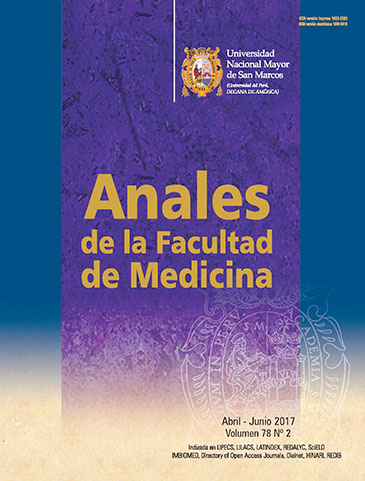Overcrowding in the hospital emergency services
DOI:
https://doi.org/10.15381/anales.v78i2.13221Keywords:
Emergency Department Crowding, Overcrowding, Emergency, Adverse Effects, Public Health.Abstract
There is overcrowding of patients in the emergency services of our public hospitals. However, it is a problem that occurs in other countries and appears in the foreign medical literature as crowding. A brief review of the literature is presented discussing time of appearance, causes, consequences and possible solutions. In the absence of national research, sources used were the Comptroller General of the Republic (Contraloría General de la República) on the implementation of and compliance with technical standards in critical areas of 12 public hospitals in Lima and Callao 2012, and the report of the Office of the Ombudsman (Defensoría del Pueblo) on the nationwide inspection of 149 hospitals nationwide in 2012. The gaps between supply of beds and care excess demand in the emergency services inspected and conditions for both inpatients stay and health personnel working in the emergency services are described. Other situations that compromise access and timely attention of people are exposed. The recommendations presented by the two inspecting entities on the congestion of patients within the emergency services are summarized. Overcrowding is a serious public health problem. The main public health providers have to prioritize studies on this matter and propose solutions with plans of development and gradual improvement in the short and medium term.Downloads
Published
2017-07-17
Issue
Section
Artículos de Revisión
License
Copyright (c) 2017 Tomás Ignacio Ponce Varillas

This work is licensed under a Creative Commons Attribution-NonCommercial-ShareAlike 4.0 International License.
Those authors who have publications with this magazine accept the following terms:
- Authors will retain their copyrights and guarantee the journal the right of first publication of their work, which will be simultaneously subject to Creative Commons Attribution License that allows third parties to share the work as long as its author and its first publication this magazine are indicated.
- Authors may adopt other non-exclusive licensing agreements for the distribution of the version of the published work (eg, deposit it in an institutional electronic file or publish it in a monographic volume) provided that the initial publication in this magazine is indicated.
- Authors are allowed and recommended to disseminate their work over the Internet (eg: in institutional telematic archives or on their website) before and during the submission process, which It can produce interesting exchanges and increase quotes from the published work. (See El efecto del acceso abierto ).
How to Cite
1.
Ponce Varillas TI. Overcrowding in the hospital emergency services. An Fac med [Internet]. 2017 Jul. 17 [cited 2025 Jun. 19];78(2):218-23. Available from: https://revistasinvestigacion.unmsm.edu.pe/index.php/anales/article/view/13221



